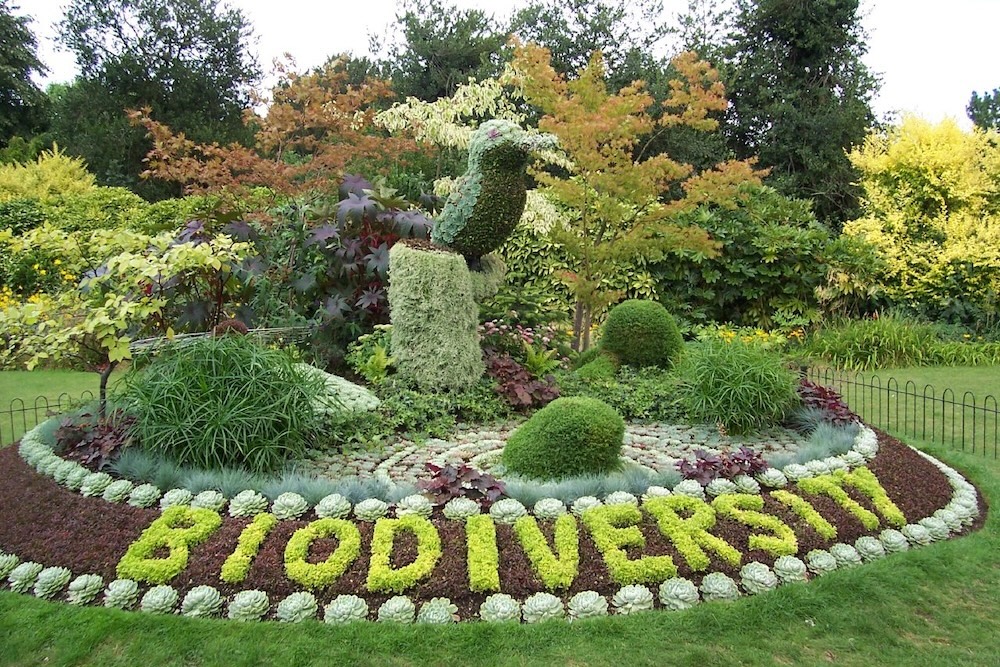Welcome to the world of polyculture, an approach to gardening that embraces diversity and mimics natural ecosystems.
Designing a Manicured Garden: A Comprehensive Guide
Ever wondered how some gardens look immaculate all year round? These gardens, known as manicured gardens, are the epitome of horticultural excellence. They’re not only beautiful, but also add value to your property and create a tranquil environment.
But, are they the right choice for you? In this guide, we delve deep into the world of manicured gardens, explaining what they are, their elements, and whether you should consider designing one.
Because, at the end of the day, you might be much better off with a low-maintenance garden than a manicured one.

Understanding the Concept of a Manicured Garden
Definition of a Manicured Garden
A manicured garden can be defined as a carefully maintained and presented outdoor space where plants, lawns, and other elements are kept in pristine condition. There are many garden styles that require manicuring, including formal gardens, Japanese gardens, and even contemporary Australian native gardens.
What sets a manicured garden apart from an ordinary garden is the level of care and attention to detail that goes into its maintenance. From perfectly pruned shrubs to neatly edged lawns, every aspect of the garden is meticulously looked after to ensure it always looks its best.
Manicured gardens aren’t the only gardens that look good. But if you’re willing to put in the work, you can achieve something that’s pretty special.
Elements of a Manicured Garden
Manicured gardens can vary greatly in design, but they typically include a mix of plants, hardscape features, and often water elements. The plant life in a manicured garden can range from formal hedges and topiary – shaped into precise geometric forms or intricate designs – to naturally shaped shrubs and hedges, which are meticulously pruned to enhance their natural shape rather than being forced into an artificial form.
There’ll often be turfed areas with lines mowed into them (using a cylinder mower) so that they look like professional-grade sportsturf.
Should You Design a Manicured Garden?
While the allure of a manicured garden is undeniable, it’s not for everyone. On one hand, a manicured garden can increase the aesthetic appeal of your property, provide a relaxing outdoor space, and even improve your home’s resale value.
On the downside, these gardens require a significant amount of time, effort, and knowledge to maintain. You must be prepared to commit to regular upkeep or have the budget to hire a qualified horticulturist.
A general maintenance gardener may suffice for basic tasks like mowing and hedge pruning, but for optimum results and to correctly identify and treat plant health problems,
it’s probably best to invest in an expert in the field. Before deciding to design a manicured garden, weigh these factors carefully. If you’re ready for the commitment, the rewards can be well worth it.

Planning Your Manicured Garden
Assessing Your Space
Before you begin designing your manicured garden, it’s important to understand the space you’re working with. Start by measuring your garden area to get an idea of its size and potential. Sketch a rough outline of your plot on paper or use an online design tool for a more detailed layout.
Next, evaluate the climate, soil type, microclimates, sunlight exposure and irrigation requirements of your space. All these factors will significantly influence the types of plants that will thrive in your garden.
Remember, some aspects of garden planning may require professional expertise. If your garden vision involves complex elements like retaining walls or pools, it’s wise to consult with a landscape construction expert or an experienced garden designer or landscape architect.
Choosing Your Plants
The choice of plants for your manicured garden should be guided by several factors. Firstly, consider the conditions you’ve just assessed within the growing environment. Some plants are better suited to cool climates, while others thrive in warmer areas. Similarly, different plants have varying soil preferences.
At Ozbreed, we focus on breeding plants that are beautiful but are also un-fussy with an ability to tolerate drought, wet feet, frost, and so on. Maintenance requirements are another crucial factor to consider. Some plants require frequent pruning to maintain their shape, while others need minimal intervention.
Choose plants that align with the amount of time and effort you’re willing to invest in garden maintenance. We’ve bred certain plants that are fast-growing, such as Quick Fence Viburnum, as well as slower-growing plants that will require less frequent pruning, such as Better John Callistemon.
By opting for slower-growing hedge plants, you can allocate more resources to other maintenance tasks like ensuring a weed-free garden.
Designing the Layout
Designing a functional and aesthetically pleasing garden layout is an art. Here are some basic principles to guide your design process:
Balance: Aim for a balanced look in your garden. This doesn’t necessarily mean that everything has to be symmetrical, but there should be a sense of harmony in the overall arrangement.
Proportion: Consider the scale of your garden and the elements within it. Large gardens can accommodate bigger plants and features, while smaller spaces require more compact elements.
Focal Point: Every good garden design has at least one focal point. This could be a striking plant, a beautiful statue, or a tranquil water feature.
To bring your design to life, sketch it out on paper or use garden design software.
Setting Up Your Manicured Garden
Adding Hardscape Elements
Hardscape elements like walkways, fountains, and benches can significantly enhance the appeal of your manicured garden. However, installing these features can be challenging and may require professional help. Improper installation can lead to long-term problems like drainage issues and structural instability.
When choosing a landscape construction company, do your due diligence. Look for companies with a proven track record, positive customer reviews, and transparent pricing models.
Don’t be afraid to shop around, because you don’t want to have to deal with unnecessary problems due to poor landscaping once the garden has become established.
Preparing the Ground
Before you start planting, it’s important to prepare the growing environment properly. This involves several steps:
Soil Preparation: Start by testing your soil to determine its pH, texture and structure. Based on the results, you may need to add amendments like organic matter, lime, gypsum, soil wetters, quality hydrogels, kaolin clays, etc.
Irrigation: Consider consulting with an irrigation specialist to install a smart irrigation system. This can save you time and ensure your plants receive the right amount of water. It’ll also save you headaches in the future because if you try to set up an irrigation system on your own you’ll probably get a lot of things wrong.
Mulching: Mulch helps to conserve soil moisture, suppress weeds, and improve soil health. Spread a layer of mulch around your plants, leaving a small gap around the stem to prevent rot. Opt for chunky mulch which won’t block water as much as fine mulch.
Planting Your Garden
Now comes the fun part – planting your garden! Here are some steps to guide you:
Dig a hole: The hole should be twice as wide and just as deep as the root ball of your plant.
Place the plant in the hole: Ensure the top of the root ball is level with the surrounding soil – no deeper or higher than the soil or mulch level, because we want roots in the ground and shoots in the air.
Backfill the hole: Gently firm the soil around the base of the plant.
Water well: Thoroughly water your newly planted specimen to settle the soil and reduce transplant shock.
Maintaining Your Manicured Garden
Routine Care and Upkeep
Maintaining a manicured garden requires regular, sometimes daily, attention. Tasks include mowing, watering, fertilising, pruning, monitoring plant health, and maintaining mulch.
Smart irrigation systems can help ensure your plants receive the right amount of water, even when you’re not around. These systems are typically adjustable on a phone app, allowing you to cater to the unique needs of different plant species in your garden.
Fertilising should be done beneath the layer of mulch to ensure nutrients directly reach the plant roots and there are no unsightly piles of manure on top of the mulch. Over time, mulch will need to be “fluffed up” or turned over to maintain its appearance and effectiveness. Over the course of a few years, it will break down and need to be replaced.
Regular hedge pruning is required to maintain the formal look of a manicured garden. Most hedges need to be pruned every 4 – 12 months, depending on the plant, the climate, and the season.
Every year, consider selectively removing large branches from within your hedges. This allows light to reach the interior of the plants, promoting photosynthesis, disease resistance, and overall plant health. This is best left for a professional horticulturist to do.
Other plants in your garden may also require pruning to maintain their natural shape. This is usually achieved by selectively removing branches back to a fork or bud. Leave the trees for a professional arborist to prune because mal-pruning can shorten their lifespan.
Remove all clippings and put them in your compost pile or green bin. Pressure wash concrete pathways and walls to remove moss, algae and mould. Make sure that everything looks neat and tidy.
Lastly, always keep an eye out for signs of pests or diseases. Early detection can make treatment much more manageable.

Common Challenges and How to Overcome Them
Dealing with Pests and Diseases
Common pests in gardens include thrips, aphids, scale insects, mealybugs, spider mites, caterpillars, weevils, slugs, and beetles. Each pest requires a unique approach, but generally speaking, encouraging natural predators into your garden and maintaining plant health can help manage these pests.
Creating an environment that discourages disease is also important. This includes ensuring good air circulation, avoiding overwatering, and promptly removing any infected plant material.
Managing Weeds
Effective weed control is a part of managing any garden, but it’s especially important in a manicured garden. Non-chemical methods are usually the best first line of defence. This includes setting up your garden with up to 10cm of mulch to discourage weed growth, tackling weeds early before they have a chance to establish, and regularly topping up mulch.
Some people like using plastic weed mat beneath the mulch, but as a maintenance horticulturist of 10 years I personally believe their ability to prevent weeds is a myth.
The mulch breaks down on top and the weeds simply grow in that layer of composted bark chips instead. Plus, it looks ugly when the plastic threads become exposed and they release micro plastics into the environment.
Chemicals should be used as a last resort, starting with the least harmful options. Salt and vinegar may seem like natural solutions, but they can harm your garden and should be avoided. Glyphosate, when used correctly, is one of the safest herbicides available.
There are also “natural” herbicides which can be quite a bit more expensive but some of them work as long as the weed’s root system isn’t too established and there isn’t a taproot.
Daniel’s Wrap
Creating and maintaining a manicured garden is no small task. It requires planning, physical effort, regular maintenance, and a keen eye for detail.
However, the rewards — a stunning, tranquil, and valuable outdoor space — are well worth it. So why not start your journey towards creating a beautiful manicured garden today?




This Post Has 0 Comments